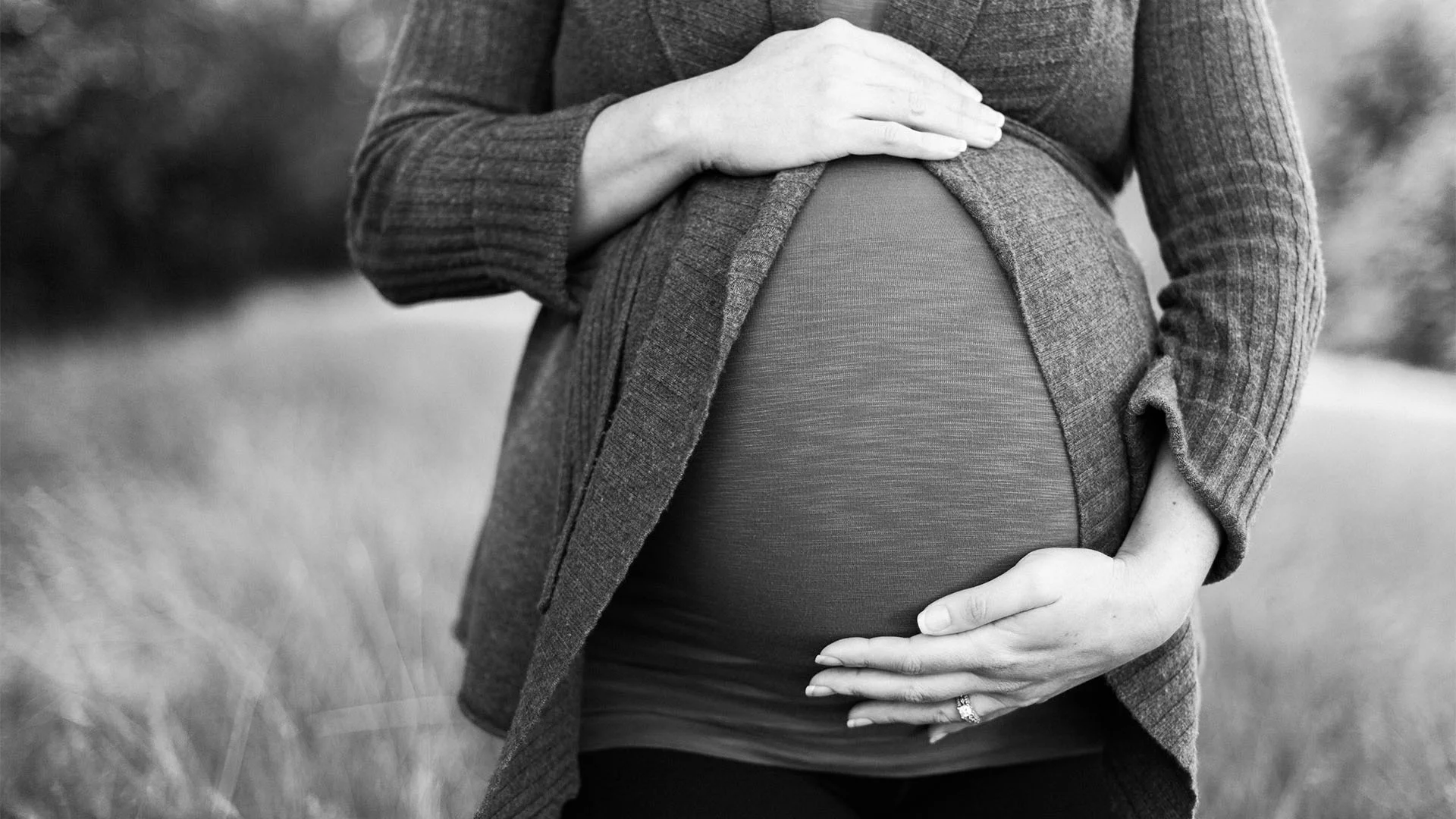Maternity leave is the term used for the length of time that a new parent takes off of work when they give birth, adopt a child, or are given a new foster placement. The state of California has laws to protect employees and their job security when they need to take maternity or parental leave. There are some laws that also allow for some employees to have paid leave as well.
California Maternity Leave Laws
The following laws are all laws that help provide new parents with enough time to welcome the newest member of their family.
California New Parent Leave Act:
This law was implemented in 2019 and applies to companies with twenty or more employees within a seventy-five-mile radius. This new law allows employees that qualify to take 12 weeks of unpaid leave off to take care of a new child. In order to qualify, the following criteria must be met:
- Employee must have worked for at least 1 year and at least 1,250 hours
- Employee must notify employer within 30 days or as soon as possible
While a new parent is on leave, their health coverage must be maintained, and the employee must be given their same job/position upon return.
California Family Rights Act (CFRA):
This California law applies to companies with fifty or more employees within a seventy-five-mile radius and provides new parents with 12 weeks of unpaid leave off. To qualify, an employee must:
- Employee must have worked for at least 1 year and at least 1,250 hours
- Employee must notify employer within 30 days or as soon as possible
Employer must respond within 10 days and continue to provide benefits throughout the leave. It is important to note that health insurance premiums must still be paid and that the premium will be paid after taxes which means that premiums will go up. Upon returning, the new parent must be given the same or similar job back.
California Pregnancy Disability Leave Law (PDLL):
This law applies to companies with five or more employees and allows new mothers to take up to 4 months of unpaid leave off to deal with pregnancy related issues like severe morning sickness, doctor ordered bed rest, prenatal care, and childbirth recovery. This law also requires that your employer keep your position available for return. This law doesn’t require any certain length of employment to qualify and employers much continue to provide benefits during the PDLL time of absence. This law can be used in addition to the 12 weeks allowed under the CFRA which means that mother that qualify can take up to 7 months off to welcome a new child.
California Paid Disability and Family Leave:
California can provide paid leave for employees that are temporarily unable to work due to disability or want to take time to bond with a newborn. This benefit is called California’s short term disability insurance (SDI) and it provides a percentage of an employee’s normal pay while they use their disability leave for pregnancy or childbirth. This is actually paid into by the employee into a state fund in the form of taxes that are withheld from paychecks.
The same program offers California Paid Family Leave (PFL) which provides an additional 6 weeks of partially paid leave for parents who want to bond with their newborn. These programs are available to any employee regardless of employer size but employers with less than 20 employees are not required to provide job protection. This means that while every employee has the right to take advantage of these programs, smaller employers can terminate the employees or refuse to make their old position available upon return.
Family and Medical Leave Act (FMLA):
The FMLA is a federal law that requires companies with fifty or more employees and any public agency, including public and private elementary and secondary schools, to provide employees with up to 12 weeks of unpaid, job protected maternity leave. To qualify an employee must:
- Employee must have worked for at least 1 year and at least 1,250 hours
- Employee must notify employer within 30 days or as soon as possible
Who is Required to Provide Maternity Leave?
According to California employment laws, if a company has 5 or more employees, they must provide 12 weeks of unpaid leave for employees who are new parents. They must also allow up to 4 months of unpaid pregnancy related disability leave for employees who are unable to return to work due to pregnancy and/or childbirth. If a company has 4 or fewer employees, they are not required to hold an employee’s job or position in the event of a pregnancy or new child.
Length of Maternity Leave in California
There are three different kinds of maternity or parental leave that a new parent may take in California:
Pregnancy Disability Leave – When a person’s pregnancy or the act of childbirth leaves that person disabled and unable to return to work, they may be entitled to anywhere up to 4 months of leave under certain conditions.
Family Leave – Companies with 20 or more employees may provide up to 12 weeks of leave for their employees to bond with a new child.
Reasonable Accommodation Leave – When an employee has used their provided family related leave, they may still be unable to return to work for various related reasons. New mothers dealing with a pregnancy related temporary disability fall under a protected class so reasonable accommodations may be required, even if this means additional time off.
There are some occasions that may call for an employee to take all three kinds of leave, and may do so consecutively, taking seven months and then however much is considered reasonable to the situation. The employee is generally also able to continue to receive benefits through their job, and in some cases, also receive pay. This however depends on the job itself as well as the type of leave taken. There are separate laws and regulations governing payment while on leave. Maternity leave in and of itself is considered unpaid leave.
Pregnancy Disability Leave
Pregnancy disability leave (PDL) is an option available for an employee who has become disabled in some way due to pregnancy or childbirth. In order to be eligible for pregnancy disability leave, two factors are taken into consideration:
- Was the employee rendered disabled due to pregnancy, childbirth, or some type of related medical condition?
- Does the employer have 5 or more employees?
If the answer to both of these questions is yes, then the employee is eligible to take pregnancy disability leave for up to 4 months. This does not however mean that the employee must take their entire leave in one go. Depending on the health condition, the employee may need to take leave intermittently.
When determining whether someone is eligible for pregnancy disability leave, it is important to remember that simply being pregnant does not make someone disabled. However, there are many complications and illnesses related to pregnancy and childbirth that may result in a doctor determining that someone is unable to work. While it is common for conditions towards the end of a pregnancy to result in disability, there are some situations that may call for disability leave earlier or later, including but not limited to:
- Debilitating morning sickness
- Gestational diabetes
- Hypertension
- Loss of pregnancy
- Mandated bed rest
- Preeclampsia
- Post-partum depression
- Recovery after childbirth
While the pregnancy itself is not considered a disability, the act of childbirth is generally legally considered to render an employee disabled while they recover. Childbirth recovery can generally take from 6 to 8 weeks, but it varies case by case. Depending on the person’s health and in the event of complications, it may take longer.
Family Bonding Leave
Any parent who is an eligible employee may take up to 12 weeks of leave to bond with a new child, whether that child was recently born, adopted, or temporarily placed as a foster child. This leave may be added onto whatever leave an employee took for their pregnancy as well.
As of 2018, there are three factors that are required for an employee to be eligible for family bonding leave:
- The company must have 20 or more employees within a 75 mile radius
- The employee must have been working for the employer for at least 12 months before the leave begins
- The employee must have worked at least 1,250 hours or more for the employer in the past 12 months
Family bonding leave can be taken intermittently; however, it must be taken with the first year of the child’s birth or placement with the family.
Generally, employers are permitted to require that employees take at least two weeks at a time for family bonding leave, but employees are legally entitled to request two instances of a shorter leave.
Reasonable Accommodation Leave
In the state of California, it is a public policy violation for an employer to discriminate against their employees due to mental or physical disability. It is the responsibility of the employer to ensure that any disabled employees are accommodated fairly. Reasonable accommodations are any adaptation to the employee’s duties or environment that would help them to do their work. Generally, with pregnancy related disabilities, that accommodation means time off work even if the employee has utilized all of their allowed pregnancy related leave.
There are a few requirements that must be met when determining if an employee is eligible for reasonable accommodation:
- If the employer has 5 or more employees
- If the employee has a mental or physical disability that prevents them from being able to properly do their job
- If the accommodation will give the employee the ability to properly do their job
- If the accommodation will not be an undue hardship for the employer
Right to Pay During Maternity Leave
Officially, maternity leave is unpaid. But there are some situations wherein an employee may receive some kind of pay or benefits while on leave.
Medical benefits during maternity leave – When an employee is out on pregnancy disability leave or family leave, the law states that their employer must continue to provide any medical benefits that the employee was receiving beforehand. Employers are also prohibited from changing the requirements for those benefits for an employee who takes pregnancy or family leave.
California State Disability Insurance – In the state of California, it may be possible to receive payments from short term disability insurance (SDI) while out on pregnancy or childbirth related disability leave. If a person’s paychecks have had at least $300 withheld in what is known as the base eligibility period. This is a span of 12 months that ends the quarter before the start date of the employee’s disability leave.
Temporary disability pay – Legally speaking, employers do not generally have to provide paid pregnancy disability leave. However, if they do provide paid temporary disability leave in other instances for other employees, they may be required to do so for pregnancy and childbirth related disability leave as well.
California’s paid family leave – In some instances, a person may be entitled to anywhere up to $1300 a week for as long as 6 weeks in paid leave to bond with a new child within the first 12 months after the child is born, adopted, or placed with the family through foster care.
Accrued paid time off – While on maternity leave, an employee may decide to utilize their accrued vacation or sick pay. Some employers may even insist that they do. For family leave, an employer may insist that the employee utilize any accrued time whether paid or unpaid. However, for pregnancy disability leave, the employer is only permitted to insist that the employee utilize sick leave. Otherwise, the decision of whether or not to utilize PTO is up to the employee.
How to Request Maternity Leave
It is expected that an employee give their employer advanced notice of when they plan to go on leave. Generally, they should inform their employer of:
- When they are going on leave
- How long they will be out
- Whether they will be taking pregnancy disability leave and/or family leave
Technically speaking, this information is given by submitting a request to go on leave. However, their employer is not legally allowed to deny the leave if the employee is entitled to it under California state law and has given proper notice.
An employee may submit a verbal request for maternity leave, but it is advisable to submit a written request that clearly states all pertinent details including the date of when it was submitted and to keep a copy for your own records as well.
If possible, it is good practice to give your employer 30 days prior notice before going on leave. Some employers may even make this mandatory policy. In the event that such advanced notice can not be given, it is expected that the employee notify their employer as soon as feasibly possible. Employers are not legally allowed to deny a last minute request for leave due to a medical emergency related to pregnancy or childbirth. They are however permitted to ask relevant questions to verify if the employee is eligible for leave.
Pregnancy Discrimination
In the state of California, it is a public policy violation for an employer with 5 or more employees to discriminate against any person because of pregnancy. There are many ways that an employer might discriminate against an employee on the basis of their pregnancy, including but not limited to:
- Not hiring someone because they are pregnant or might become pregnant at some point
- Terminating an employee or demoting them due to pregnancy related medical conditions
- Not providing an employee with necessary reasonable accommodations for disabilities caused by pregnancy or childbirth
- Rejecting an eligible employee’s request for maternity or pregnancy disability leave
- Discriminating against or harassing an employee for needing to breastfeed, pump, or tend to pregnancy related conditions
Burden of proof in pregnancy discrimination cases is on the employee. It is their responsibility to provide the facts or elements that prove their claim. These elements can include but are not limited to:
- That the employer was subject to California pregnancy discrimination laws
- That the employer negatively interfered with the person’s employment by denying employment, termination, demotion, or denying promotion
- That the employer’s actions were primarily due to the person’s pregnancy, disabilities caused by pregnancy, or the possibility that the person may become pregnant
- That the person was harmed in some way due to the employer’s actions
Which Workers Receive Protections Against Pregnancy Discrimination?
While the language of the law states “any person”, there are actually some specifications that go into determining who is protected against pregnancy discrimination. There are four basic categories that protected employees tend to be grouped into:
- Job Applicants – People who actively seek employment with an employer either through a written application or by submitting a direct request.
- Traditional Employees – People who have been hired by an employer who controls how they do their work.
- Temporary Employees – Someone who was placed with an employer by an agency. In these instances, the agency and the employer may both be held accountable for discrimination.
- Unpaid interns – As of 2015, pregnancy discrimination protections have been extended to unpaid interns as well
Just because someone fits into one of these categories does not mean that they are automatically protected, however. If a pregnant person applies for a job and is refused on the basis that they are underqualified, then that does not fall under discrimination. The law also does not protect people whose employers are their own direct family members such as their spouse, parent, or child. Independent contractors are afforded legal protections against pregnancy based harassment, but not discrimination.
What Forms of Pregnancy Discrimination Are Illegal?
Pregnancy discrimination is a broad term that encompasses any action that is taken to treat someone differently from others due to their pregnancy or because they had recently given birth. This discrimination can be used to impact many things such as:
- How much a person is paid
- Job duties and benefits
- The work they are given
- The conditions in which they work
This discrimination may happen and is prohibited at any point during a person’s employment and even before it such as:
- During the recruitment process
- During the hiring process
- During training
- When giving promotions and advancements
- When giving pay raises
- When approving or denying time off
- During layoffs and terminations
Discrimination is not just about if an employer makes a person’s job worse, but also if an employee becomes disabled and the employer refuses to make improvements in the form of reasonable accommodations as well.
Can You Get Fired for Taking Maternity Leave?
Companies who have less than 5 employees and select non-profit religious organizations are not legally required to allow their employees to take maternity or parental leave, nor do they have to hold that employee’s job for them. There are a few other situations that are also not protected:
- If the person has been employed by the company for less than 12 months
- If the person has worked less than 1,250 hours during the past 12 months
- If the employer is the person’s parent, spouse, or child
- If the person is an independent contractor
Right to Reinstatement
When an employee takes pregnancy disability leave, they have a legal right to be able to return to the same position they held before. However, there are some instances where the employer may be allowed to move them to a comparable position. There are some companies that require employees returning from any type of disability leave to provide them with a ‘release to return to work’ certification from their doctor before allowing them to return to their original position, but if they do not require this of any employee out on any type of disability leave, they may not require it of people returning from pregnancy disability leave.
Regulation 7291.10(a) forbids any employer from transferring or refusing to reinstate an employee who has returned from pregnancy disability leave, barring exceptions laid out in 7291.10(c).
Regulation 7291.10(b)(2) goes on to specify that if there was no written agreement of reinstatement, or if there is a discrepancy with the reinstatement date, the employee must be reinstated within two business days of notifying the employer that they are ready to come back to work. If it is not possible to reinstate them within two business days, then it must be done as soon as possible.
This does not mean that the employee has more rights to being reinstated or other benefits than if they had not gone on leave. An employer may refuse to reinstate an employee to their same position if they can prove at least one of the following:
- That if the employee had not gone on leave, they would no longer be employed in that same position by the time the reinstatement was requested. For example, if the location they were working at was closed down.
- That keeping the job for the employee, either by leaving it open or hiring a temp worker, would have a substantially negative impact on the business running safely and efficiently.
Generally, if an employer can not reinstate an employee to their previous position, they are expected to reinstate them at a position that is similar or comparable. However, they still have no greater right to this position than they would have if they had not gone on leave and their position was being eliminated. An employer may refuse to reinstate an employee to a comparable position if they can prove at least one of the following:
- That they would not have offered the employee a comparable position if they had not gone on leave
- That they do not have any available comparable positions. A position is considered available if it is a position the employee is qualified for or entitled to and is open when the employee is scheduled to return, or within 60 calendar days of that date. The employer is responsible for informing the employee of available comparable positions. If there is no available position when the employee is scheduled to return, but one opens up and the employee is reinstated within those 60 days, the time in between does not count towards pay or benefits.
- That placing the employee in the available position would have a substantially negative impact on the business running safely and efficiently
- That the employee was laid off from their position for legitimate reasons not related to the pregnancy disability leave. When the employee is laid off, the employer no longer has a responsibility to uphold their leave, benefits, or reinstatement outside of any collective bargaining agreements.
When the pregnancy disability leave is concluded, they may be eligible for CFRA leave. In this instance, their rights regarding reinstatement are outlined by the CFRA and not the PDL. When an employee returns to work from CFRA leave, they have a legal right to be reinstated to the same or comparable position.
Maternity Leave Rights Violations
If and when an employer violates their employee’s legal rights, that employee has a few options:
- Seek informal resolution with the employer
- File an administrative claim
- File a lawsuit
There are pros and cons to each choice, and some people may need to exhaust all three options. In these cases, it is good to speak with an employment lawyer, but it is not required to have one. There are many benefits to having an attorney in these cases, such as:
- Information, evidence, and document collection
- Finding the best way to apply the law to the facts of the case
- Knowing how to best navigate the legal process
- Obtaining the best possible compensation
While having an attorney does not automatically guarantee a positive outcome, it is generally better to have one. A good lawyer has the skills and experience necessary to handle the complexities of the case.
Contact Mesriani Law Group
The right to take maternity leave is extremely important. Having that right violated can be devastating and have serious negative consequences. An employment lawyer can help alleviate the stress and hardship and take care of getting you the compensation you deserve. Our attorneys are experienced, hardworking, and dedicated. If you have been discriminated against by your employer due to pregnancy or pregnancy related disabilities, call Mesriani Law Group today for a free consultation.
Maternity Leave FAQs
How much time do you get off for maternity leave in California?
An employee who becomes pregnant may be eligible for 4 months of pregnancy disability leave and 3 months of family leave. A person may choose to take family leave after they have used all of their disability leave and may even be eligible for additional reasonable accommodation leave after that.
How much do you get paid for maternity leave in California?
While there is no legal obligation for an employer to provide paid maternity leave to their employees, there are ways for individuals to receive payments while on maternity leave. State disability insurance, California paid family leave, and any paid time off benefits provided by the employer are all options that an employee might seek to utilize.
How do you calculate maternity pay?
California’s paid family leave calculates approximately 60 to 70 percent of the weekly income you earned for the 5 to 18 months leading up to the date of the claim. This number uses the highest earning quarter in that timeframe. There may be other factors that impact how the amount is calculated such as other income, military service, and overdue court ordered support payments.
How long before due date should I take maternity leave?
There are many different factors that can go into a decision of when to begin maternity leave. Sometimes, complications with the pregnancy can cause a person to go on pregnancy disability leave early on. Other people may choose to wait until the due date in order to take all of their time after the baby is born. Generally, it is common for employees to begin maternity leave anywhere from a week to a month before their due date.








